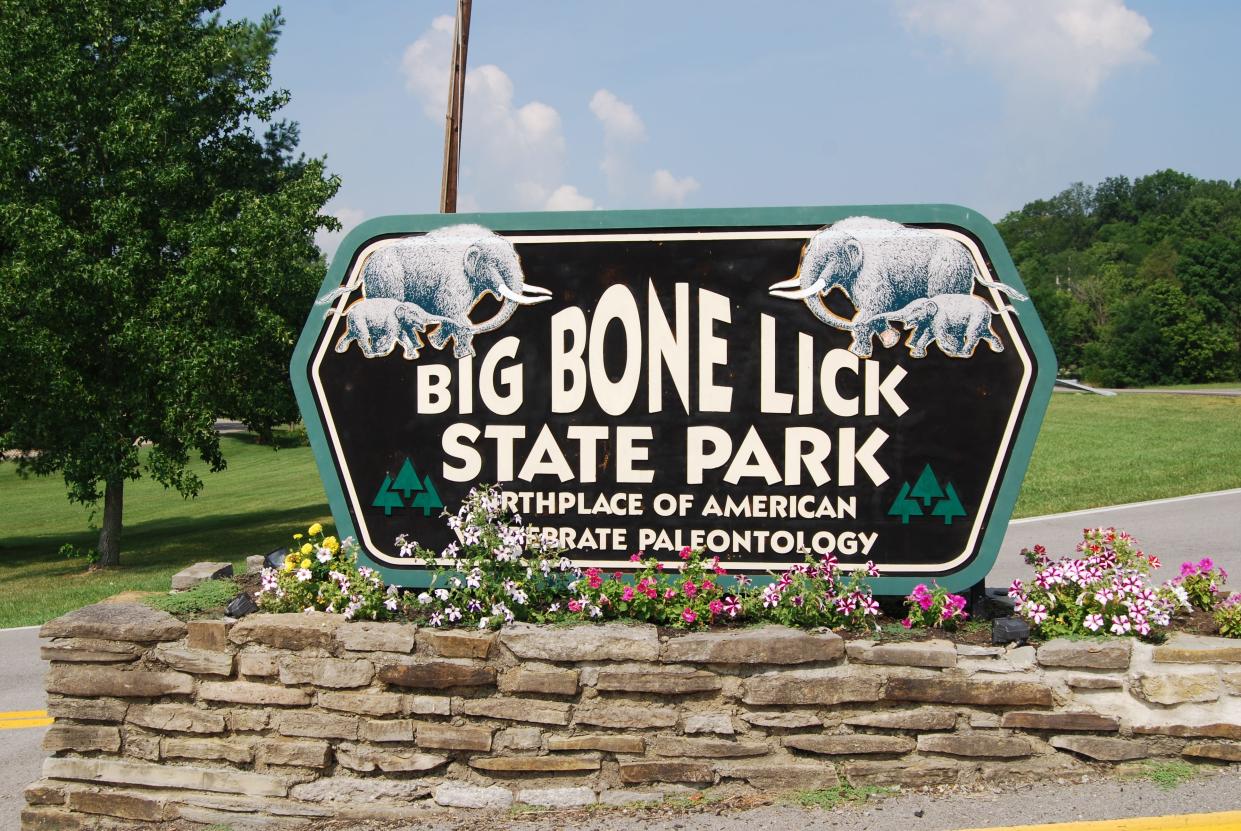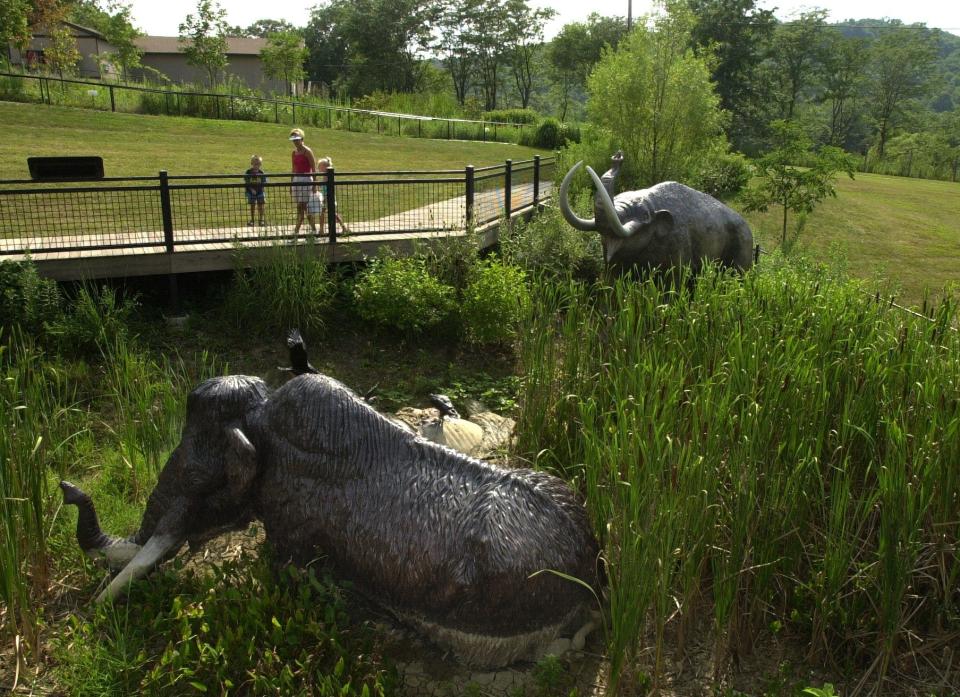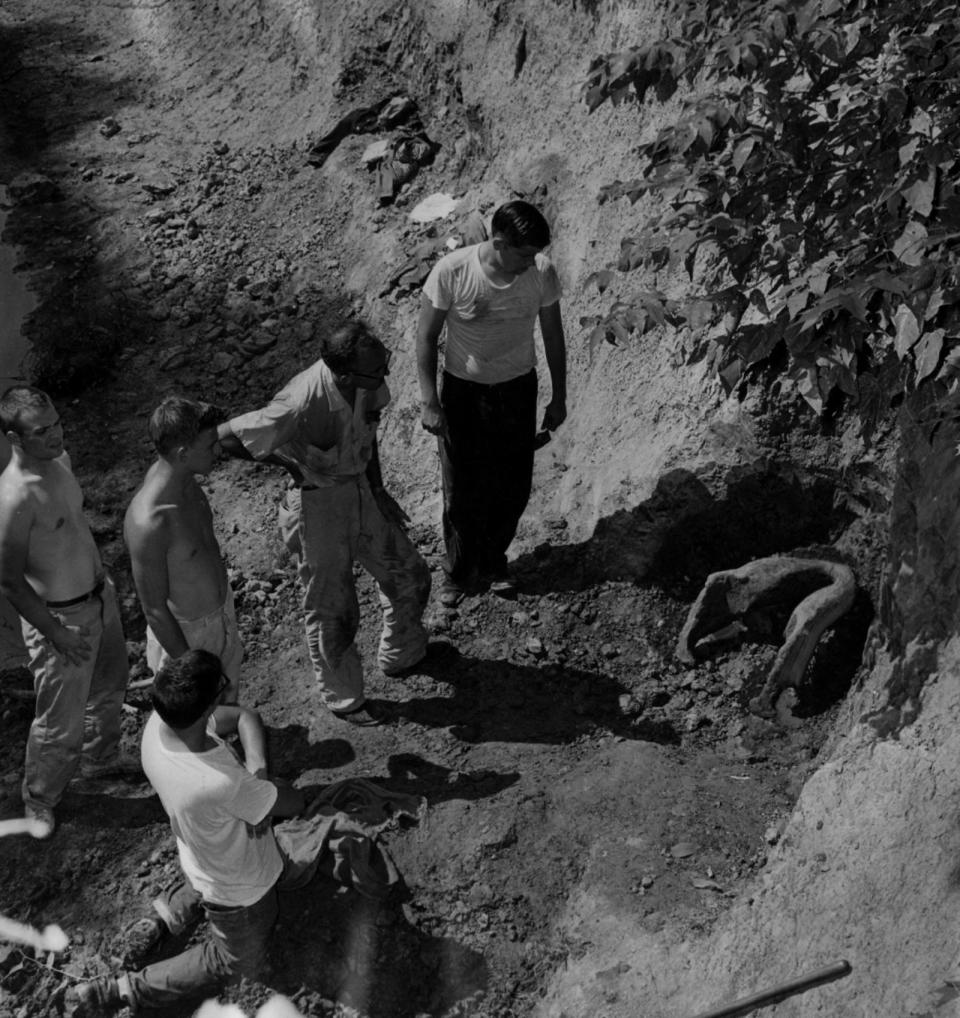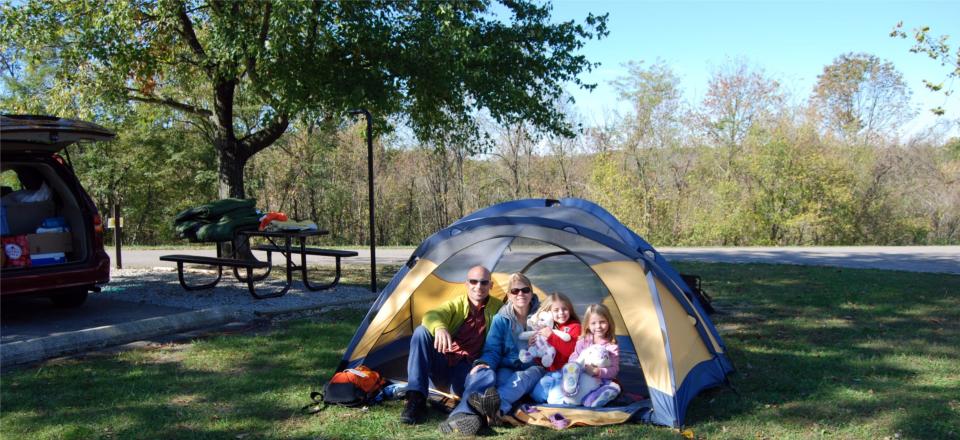How did Big Bone Lick get its name? Everything you need to know about the historic site

It's no secret that Kentucky is home to amazing sceneries and spaces like Mammoth Cave, Red River Gorge, and more than 120 parks and recreational spaces around Louisville.
But more than one hour away from Louisville, in Union, Kentucky is a uniquely-named Big Bone Lick, one of Kentucky's state parks and home to prehistoric fossils, natural springs and bison.
How did Big Bone Lick State Historic Site get its name?
The Big Bone Lick name is a nod to its history, which can still be enjoyed in the park.
Emily Hendrickson, a business office assistant of the park, said it was named Big Bone Lick because of the mammoth artifacts that were found and because of the salt springs that animals drank.

The salty natural springs are open to the public, according to the National Park Service. People can also see the prehistoric fossils at the visitor's center along with life-size replicas of prehistoric animals in the diorama pit.
More: What the Supreme Court's 'Sackett' ruling could mean for Kentucky's dwindling wetlands
History of Big Bone Lick State Historic Site
Big Bone Lick is full of rich history dating back 10,000 years and it "is recognized as the key to understanding the life of the Ice Age on the North American continent," the National Park Service says. There have been many fossils from prehistoric animals found in the area, many of which can be seen at the visitor's center.
Big Bone Lick was the scene of expeditions by Meriwether Lewis and William Clark − of the Lewis and Clark expedition − but in separate instances. Lewis visited in 1803 and gathered specimens which he sent to President Thomas Jefferson. The president then sent Clark to conduct the first vertebra paleontological dig of the United States, the National Park Service says.
The salt industry boomed between 1756 and 1812, but evaporating water from the salt was a very expensive task and not that profitable. The process ended in 1812. "Besides salt, the springs were known for their medicinal qualities and by 1821 Big Bone Lick was one of the most celebrated resorts in that part of the Ohio Valley."

Things to know when visiting Big Bone Lick State Historic Site
Hours of operation: The park is open daily from morning to dusk, Hendrickson said. The gift shop inside the park grounds is open between 9 a.m. and 4 p.m.
Entrance fee: The park is free. For people that want to stay overnight, there is a fee for the camping and there are more than 62 campsites.

Amenities:
Bison can be seen around the park though visibility of them depends on the weather
Hike one of its five trails (Big Bone Creek Trail: .9 mile, easy; Bison Trace Trail: .5 mile, easy; Cedar Run Trail: .9 mile, easy; Coralberry Trail: 2 miles, moderate; Gobblers Trace Trail: .5 mile, moderate)
An 18-hole miniature golf course (open between March 15 and November 15)
Educational displays about local geology and Native American history
Approximately 40 acres of picnic grounds (with tables, grills and a playground area)
Two playgrounds
Swimming pool available for campground guests
Tennis courts are open to the public
More: COVID memorial dedicated at Kentucky Capitol
Louisville Zoo: Watch: Orangutan at Louisville zoo asks to see 3-month-old baby
Reach Ana Alvarez Briñez at abrinez@gannett.com; follow her on Twitter at@SoyAnaAlvarez
This article originally appeared on Louisville Courier Journal: What is the meaning of the name Big Bone Lick? KY state park history

